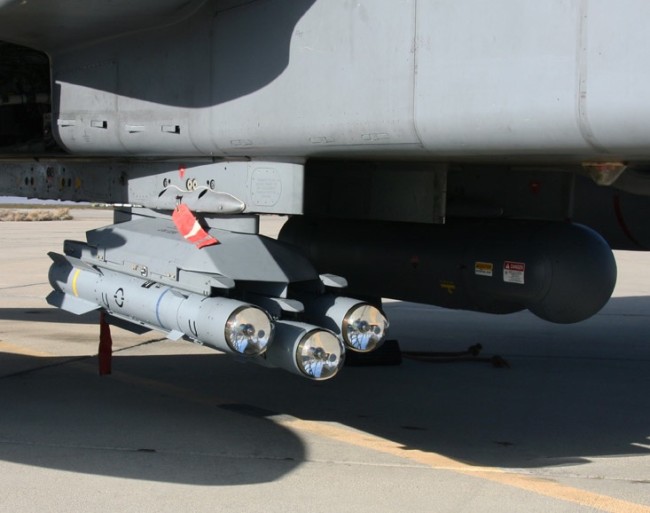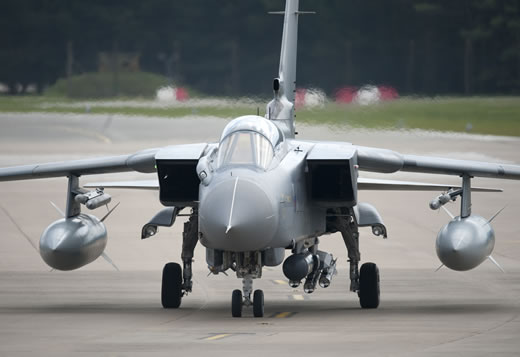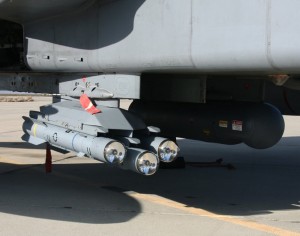

The US Air Force is looking at equipping its General Atomics MQ-9 Reaper unmanned aircraft with British-developed Brimstone missiles, to reduce collateral damage. The Reapers flown by the US Air Force are currently employed with AGM-114R Hellfire ‘Romeo’ missiles and laser guided bombs. I-HLS reports
ALthough the AGM-114R has been optimised for operation from UAVs, provided with a laser seeker with wider aspect angle, smokeless launch and multi-purpose warhead, according to Defense News the Air Force secretive Big Safari Groupis evaluating the British Brimstone missile as an alternative.
Brimstone was developed as a ‘fire and forget’ weapon, employing millimeter-wave seeker (similar to the Hellfire ‘Longbow’). However, unlike the Longbow, Brimstone was converted to integrate laser guidance in addition to the MMW seeker, providing post launch guidance and ‘man in the loop’ intervention, enabling operators to abort an attack after a missile is launch, or correct a missile that locks on the wrong target, thus prevent operational errors and engage targets in close proximity to friendly forces.
A US purchase would see the wheel come full circle for MBDA. Brimstone was originally developed based on the US-made Hellfire missile that it would replace. MBDA, Brimstone’s maker, declined to comment, referring all questions to the UK Defence Ministry. The US Air Force said it was unable to respond in time.
The 645th Aeronautical Systems Group, better known as “Big Safari,” is a rapid acquisition office for the US AIr Force, based at Wright-Patterson Air Force Base, Ohio. The group is known for its work on unmanned and intelligence, surveillance and reconnaissance (ISR) systems, and is widely credited with the decision to arm Predator drones for use in Afghanistan.
The use of armed drones in Afghanistan, Pakistan and elsewhere to take out high-value Taliban and al-Qaida leaders, UAVs like the Reaper have caused controversy, especially since the drone strikes often kill civilians, as well.
Doug Barrie, the senior air analyst at the International Institute for Strategic Studies (IISS) in London, said that having struggled to come up with a weapon of their own in this class, the US Air Force’s purchase of Brimstone would be an effective tool.

“Brimstone on Reaper, with its option for man-in-the-loop guidance, would give you all the benefits the weapon gives fixed-wing strike aircraft crews,” Barrie said. “It would be an effective quick fix, able to give Reaper users the added security of a dual-mode system that they don’t get on some other weapons. If the deal goes ahead, I wouldn’t be surprised if the [British Royal Air Force’s] Reaper force ends up being similarly equipped.”
“Brimstone is being used to great effect by the RAF’s Tornado Force in Afghanistan and was also invaluable during the successful air campaign in Libya.” said RAF Wing Commander Andy Turk, commander of IX (Bomber) Squadron “It is very popular with our air crews because of its flexibility, accuracy and reliability – they have real confidence that the weapon will deliver the effects required.” Turk led the initial Tornado operations over Libya and is currently deployed in Afghanistan.
While laser designation is effective in cluttered scenes, where targets are not easily separated from their surrounding, the MMW is considered effective against moving targets. MMW guidance techniques were developed in the late 80s and 90s, to enable outnumbered NATO forces to defeat numerically superior Russian and Warsaw Pact armor forces. The use of ‘fire and forget’ (MMW) in the current asymmetric warfare environment is limited due to the illusive nature of potential targets and lack of clear signature the missile can lock on (in short, absence of enemy tanks). Nevertheless, when circumstances provide such operation, such capability can contribute to operational flexibility, particularly in limited visibility conditions.
Brimstone is in service aboard Royal Air Force and Royal Saudi Air Forces’ Tornado strike fighters, It is expected to be integrated onto the Eurofighter Typhoon combat jet, but has not been deployed with the British Apaches or MQ-9 Reaper. MBDA also stated the weapon is suitable for integration on the F-35 Joint Strike Fighter.
The weapon came to prominence during the Libya campaign in 2011, when it was used to destroy targets hiding among houses without damaging the dwellings. It also has been successfully used for several years against the Taliban in Afghanistan. Royal Air Force chiefs revealed during the height of the Libyan campaign that the US and France had expressed an interest in Brimstone.
In January 2013 the British Ministry of Defense (MOD) has awarded MBDA £14 million to replenish the Brimstone missiles stocks used during the Libyan campaign, the contract will deliver hundreds new missiles. The British acquisition came weeks after the MOD contracted Raytheon £60 million for replenishing stocks of Paveway IV GPS/laser bombs.
















